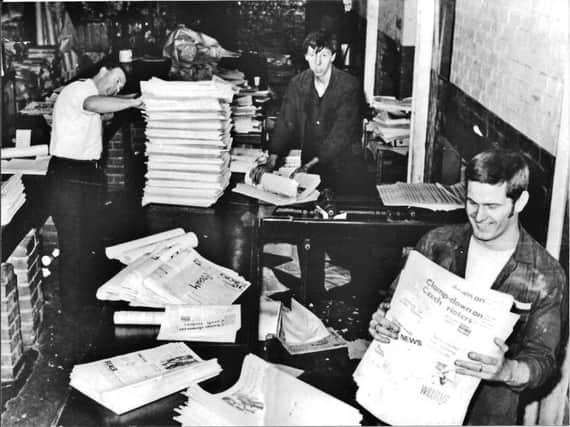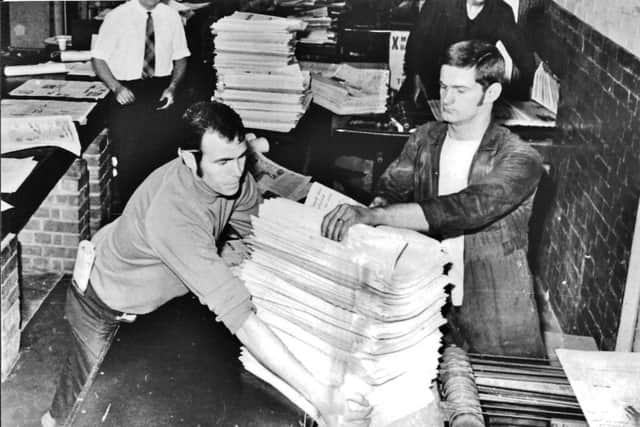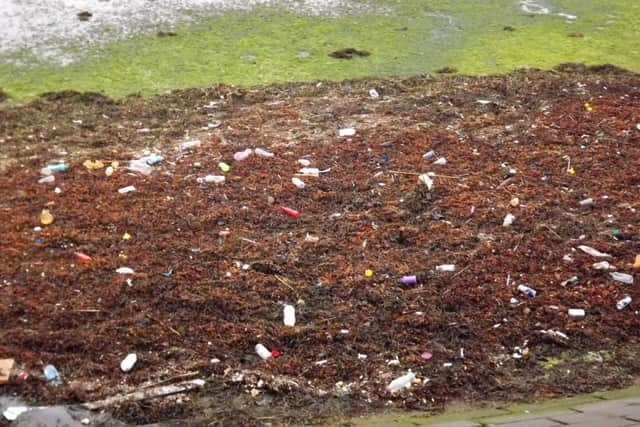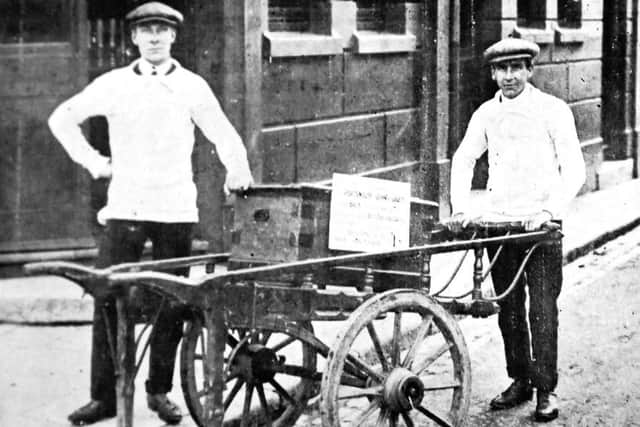NOSTALGIA: Hot off the press at Stanhope Road


In the picture on the right we see Derek Wright who is counting the stack with Tom Anderson at the rear, and Derek Heslop taking the newspapers from the conveyor wires after they came off the press.
The work they are doing was called ‘flying off’.
The papers came out laid spine facing and every 25th paper was flicked automatically at an angle.


Advertisement
Hide AdAdvertisement
Hide AdThe boys then took the papers in quires, two dozen, from the wires in front of the flick and so it continued until thousands of papers daily were ready for distribution.
At that time, as I remember but stand to be corrected, there were four editions a day - early, midday, late and final.
If something drastic occurred in the world then there might be a late final extra.
There was always an area, either on the back or front page, for late-breaking news and the latest racing or greyhound results. In the trade it was known as the ‘fudge’ but known to readers as the Stop Press.


Advertisement
Hide AdAdvertisement
Hide AdIn the edition being held by Derek is the headline ‘Clamp-down on Czech rioters’ which would date the paper to 1968 when the Russians invaded the country and took control in Prague.
It all began on January 5 and lasted until August 21, 1968, so we can date the photograph between those months.
This also means these pictures were taken when The News was printed in Stanhope Road before its move to The News Centre, Hilsea, in 1969.
The second picture was taken on the same day and shows Derek ’Daisy’ Warwick pulling the large stack of papers with Derek Heslop putting more on top.


Advertisement
Hide AdAdvertisement
Hide AdI would estimate there were 22 dozen, 11 quire in the stack. The workbench is very basic with just a pile of bricks used to support the bench.
Out of picture on the far left was where newspapers were wrapped and sent worldwide, something which I used to do in my school holidays. I can remember some of the addresses being in deepest Africa, Canada and Australia. Now of course, these people would read the paper online.
•I published the photo of pollution two months ago telling of the plastic and other rubbish invading Portcreek beside the Eastern Road. I am glad most of it has been taken away. I have also seen that a nationwide effort is being made to try to stop plastic products invading the earth. It can only be for the good.
•We hear of many people walking long distances to raise funds for charity and I have done many myself.


Advertisement
Hide AdAdvertisement
Hide AdIn 1910 the Ellsmore brothers, who may have been costermongers, people who sold fruit and veg in the street from a market, took on a bet.
They agreed to push their barrow the length of England and Scotland from Portsmouth to John o’ Groats... and back in 100 days for a £50 wager.
Fifty pounds in 1910 is now £5,661 so it was a challenge worth taking. Postcards of the boys were made to sell and to finance the trip.
I wonder if, after 118 years, anyone knows if they won their bet?